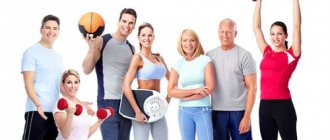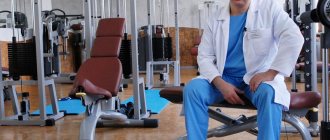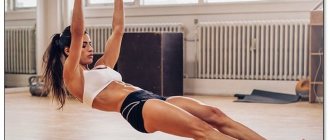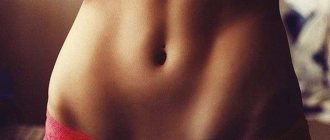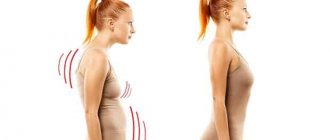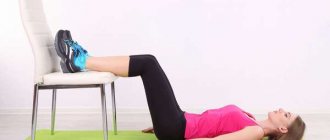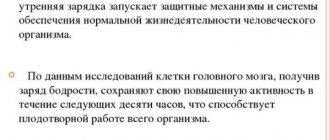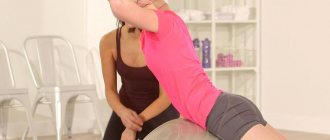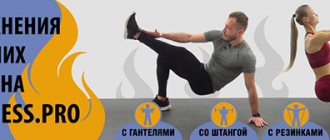Good day, dear friends and fans of a healthy lifestyle! Not many people know, but with the help of proper breathing and a system of rhythmic inhalations and exhalations, many diseases can be treated. One of the most effective and paradoxical health-improving techniques is Strelnikova’s breathing exercises, video lessons of which can be watched on our website.
Alexandra Strelnikova is not a doctor, but a famous opera singer who encountered health problems and was forced to leave the stage. But the woman did not lose optimism and inspiration. She began to look for ways to solve the problem, and found them, becoming the author of a revolutionary treatment system.
Her student and follower was Dr. Mikhail Nikolaevich Shchetinin. Just below you will find his video with a personal lesson for 12 minutes and a group lesson in unison for 24 minutes.
The essence and positive effects of gymnastics
Gymnastics is one of a kind in its technique and gives truly amazing results.
- Inhalation - during all exercises, a short, sharp, noisy inhalation through the nose (3 breaths within 2 seconds), which is performed at the peak of movements (exercises) compressing the chest.
- Exhale - you need to exhale voluntarily, through the mouth . Exhalation is passive, or rather, you cannot concentrate on it at all: it is believed that the body itself will throw out excess air.
During classes, all parts of the body are involved in work, which causes a general, pronounced physiological reaction of the body and, accordingly, an increased need for oxygen.
- All exercises are performed in parallel with breathing. This leads to increased tissue respiration and helps all tissues of the body better absorb oxygen and activate all metabolic processes.
- A special inhalation leads to irritation of a large area of receptors located on the nasal mucosa. The receptor zone provides reflex connections between the nasal cavity and almost all organs. This determines the widest range of effects of exercises, helps in the treatment of various diseases of almost all organs and systems, but they have the strongest effect on the respiratory system and are especially relevant for bronchitis, asthma, and acute respiratory viral infections.
- Inhalation “sends” the inhaled air to the deepest parts of the bronchi, due to which the lungs are completely filled with air. The vital capacity of the lungs increases by 0.1-0.3 liters after the 1st lesson. The gas composition of the blood is normalized, arterial blood contains more oxygen. Since inhalations occur parallel to active movements, the diaphragm is also fully involved in the work. As you know, this is the strongest muscle that is involved in both breathing and sound production. The so-called diaphragmatic massage of almost all abdominal organs is also implemented.
- At the same time, the cerebral cortex is also saturated with oxygen, which leads to an improvement in the functioning of all centers that regulate the functions of the body.
- The process of self-regulation of metabolic processes is being implemented.
Mechanism of action
The most important feature of the exercises is the use of forced inhalation involving the diaphragm. During training, concentration on the breaths is mandatory: you need to think about them, you should concentrate on them, and you should count them.
A large number of repetitions (1-5 thousand breaths-movements in 60 minutes) and regular, daily training (twice a day, morning and evening) within 12-15 sessions guarantee strengthening of the respiratory muscles, restoration of respiratory function, strengthening of the chest muscles, and the beginning of elimination of spinal deformities (full normalization will require more time).
A significant load does not lead to the accumulation of lactic acid in the muscles, which means there is no pain during and after exercise.
Let us dwell in more detail on the benefits of exercise for diseases of the bronchopulmonary system. An increase in the excursion of the chest leads to an increase in its suction effect. This improves lymph and blood circulation. Hyperventilation of the lungs leads to mechanical stretching of the broncho-alveolar link and activates the resorption of exudate. The development of the adhesive process is stopped, atelectasis is straightened out. Regular exercises can significantly reduce the amount of drug therapy, and in some cases, completely abandon it (for bronchial asthma, chronic bronchitis).
Advantages of the method
- No material costs or special conditions for classes.
- There is an almost complete absence of contraindications, which we will mention below, including age-related ones. The exceptions are severe, bedridden patients, patients in a coma, very young children who, due to their age, are not able to understand the technique.
- In addition to the direct therapeutic effect, exercise relieves fatigue, increases vitality, gives a great mood, invigorates, and improves memory. These “bonuses” are especially important for students, schoolchildren, and people employed in stressful professions.
- Combination with familiar cyclic exercises such as running, walking, swimming.
- Possibility of parallel drug treatment.
- Restoration of altered organs and systems and prevention of diseases.
- Breathing, which occurs during movement, allows you to restore the energy balance of the body.
- The preventive use of the method in schoolchildren can reduce the incidence of ARVI by 2-4 times.
- In just 10-15 minutes of the most simple activities, a completely different feeling appears: a person feels light, cheerful and in a great mood. This means that in a minimum period of time, completely free of charge, you can get the maximum result. And at the current pace of life, this is very important!
Useful videos
Useful videos on gymnastics can be watched on YouTube online and for free. Read people's stories in the comments, you can find interesting information there.
This video is 8 minutes long, but the activity itself takes 7 minutes. We recommend watching first and then proceeding.
Legendary meditation course for freeRecommended! The most popular meditation course for beginners in Russian. More than 100 thousand people have already learned to meditate. Try it yourself. Read more.
Another 24-minute video, based on a video with Shchetinin.
Indications
“Paradoxical gymnastics” (that’s what it’s called) is indicated for almost all diseases and any health problems. Main indications for breathing training:
- neurotic conditions and chronic depression;
- stuttering;
- myopia;
- inflammation of the lungs and bronchi;
- bronchial asthma, COPD;
- vasomotor rhinitis in acute and chronic forms;
- ARVI;
- diseases of an allergic nature, including seasonal hay fever;
- pulmonary tuberculosis;
- heart diseases;
- hypertension;
- vegetative-vascular dystonia;
- history of heart attacks and strokes;
- heart rhythm disturbance;
- headache;
- epilepsy;
- diseases of the musculoskeletal system, including scoliosis;
- disorders of the thyroid gland;
- diabetes;
- inflammatory skin diseases;
- pregnancy period;
- impotence;
- obesity. Recommended for weight loss with slight excess body weight;
- smoking.
In addition to improving the condition of various respiratory diseases: bronchial asthma, COPD, chronic bronchitis, etc., gymnastics helps:
- For the spine - training helps eliminate stoop, helps create a springy, easy gait, makes the body plastic and flexible. With regular and constant practice, Strelnikova’s gymnastics for children and adolescents with scoliosis and posture disorders gives very good results.
- Restoring nasal breathing even in those patients who did not benefit from surgery is one of the many positive effects. Even with free nasal passages, patients continue to habitually breathe through their mouths due to the fact that they have formed a complex of conditioned reflex connections in which the higher parts of the central nervous system take part. To consolidate the once lost skill of nasal breathing, time and perseverance of the patient are required. It is in this case that a special breathing technique is simply irreplaceable and helps to significantly shorten the recovery period.
- Vision - exercises stop the decline in vision, and in a good situation they can improve it by 2-3 diopters. This allows children and adults with myopia to preserve their vision and improve its sharpness.
- Stuttering - breathing exercises change the breathing pattern, producing an extremely deep breath. If you also carry out special sound exercises in parallel with this, you can achieve good results with stuttering.
- Smell - stimulation of the large reflexogenic area of the nasal mucosa provides a reflex connection with the olfactory center. This allows you to improve your sense of smell.
- Genitourinary system - Strelnikova’s gymnastics exercises have an excellent tonic and strengthening effect on the genitourinary system: Eliminate enuresis, help normalize the menstrual cycle and eliminate pain during menstruation.
- Training has an excellent therapeutic effect for varicocele in adolescents and young men. Exercises from the “Urological Complex” and special massage can eliminate phimosis and cryptorchidism.
- In most cases, deep breathing helps to normalize sexual function and increase potency, especially in young men.
- With regular use of the same “Urological complex” it is possible to get rid of such a diagnosis as chronic prostatitis.
- The so-called “Gynecological complex” helps in the treatment of female diseases - uterine fibroids, tubal obstruction, endometriosis, ovarian cysts.
- Numerous positive examples of the use of training during pregnancy make it possible to use it in this category of the population.
Positive reviews from doctors about Strelnikova’s gymnastics and the official recognition of the method as therapeutic are the best guarantee of the effectiveness of the training. But, like any other treatment method, training requires regularity and adherence to technique.
Training can be done simultaneously with the use of drug therapy. Completely healthy people can use Strelnikova’s method for prevention.
Benefit
The author of one of the most popular breathing exercises was Alexandra Nikolaevna Strelnikova, a teacher and vocalist. Even at a young age, she was diagnosed with heart problems. She often suffered from attacks of suffocation until she lost her voice completely. Together with her mother, Strelnikova developed her own breathing system, the task of which is:
- creating optimal conditions for oxygen supply to cells and tissues;
- development of respiratory muscles;
- correction of various pathologies and treatment of speech disorders;
- strengthening the child’s vocal cords and immunity in general;
- increased endurance;
- acceleration of metabolic processes in the body.
Teach your children to breathe correctly - and they will become more energetic and healthy, and will be less likely to get colds or viral diseases. When performing useful exercises from an early age in children:
- skills to control the body and emotions are formed;
- improves the functioning of the gastrointestinal tract, nervous, respiratory systems, heart and blood vessels;
- the frequency of colds decreases;
- the risk of lung infections and asthma is reduced;
- stuttering, stoop, osteochondrosis are treated;
- The issue of urinary incontinence during sleep is resolved.
Other similar techniques, such as Qigong or Taoist breathing, are not suitable for children. Some of them require enormous expenditures of energy, including restructuring your lifestyle. You can spend years of hard training to achieve the desired result, while Strelnikova's method is faster and more effective.
You can do fun exercises according to Alexandra Nikolaevna’s author’s program either alone or in a group. For preschoolers, they are often presented in the form of a game or exciting exercise. You don't need any sports equipment or a large gym for training.
Initially, breathing exercises were developed to restore the singing voice. Over time, patients noticed that not only the condition of the ligaments improved, but also their health in general.
It is recommended to perform breathing exercises for the following diseases:
- chronic sinusitis, rhinitis, bronchitis;
- asthma and tuberculosis (except open form);
- stuttering and other speech disorders;
- pulmonary edema;
- pneumonia;
- arrhythmia;
- diabetes;
- epilepsy.
Children with weakened immune systems will feel positive results from the training within a week.
Important! It is dangerous to perform breathing exercises for preschoolers with glaucoma, severe myopia and persistent hypertension.
Features of the exercises and what is needed to perform them
How to learn to breathe according to Strelnikova?
To learn special breathing techniques and exercises, it is best to watch Strelnikova’s gymnastics on video: the proverb is relevant here that it is better to see once than to hear 100 times. Plus it's free. The technique is simple, both children and elderly people can easily master it.
The main condition for exercise is access to fresh air, that is, it is best to conduct training in the fresh air or on the balcony, at least with open vents or windows.
What is the paradox of the method? During inhalation, the chest is in a compressed state, and not in its usual expanded state. Despite this, the workout does not cause fatigue, and ventilation increases fivefold.
- Breathing technique: vigorous inhalation - passive exhalation.
- Air is inhaled through the nose noisily and quickly, like sniffing, exhalation occurs through a half-open mouth without effort.
- All movements are performed synchronously with inhalations.
How often to do breathing exercises
As a treatment method, training is carried out twice a day, 1500 breaths each, morning and evening, before meals or an hour after eating.
As a method of prevention, they “breathe” in the morning, replacing the generally accepted morning exercises, or in the evening to eliminate the fatigue that has accumulated during the day. Simple and affordable exercises perfectly train the entire body, from head to toe, providing a rush of blood to the internal organs. This determines the wide list of indications for Strelnikova’s breathing exercises.
Timetable of classes:
- It’s better to start with the first 3 exercises and perform them 2 times a day.
- Every day you need to add one exercise from the complex until all 11 techniques are included.
- The rest between movements should initially be 10-15 seconds; by the end of mastering the complex, this break should be 3-5 seconds.
- Training is carried out throughout life: they replace traditional morning exercises, fitness and other sports.
Healing Breath
The breathing gymnastic complex was developed by opera singer and theater teacher Alexandra Nikolaevna Strelnikova. She suffered from a suffocating cough that prevented her from singing. Over time, the singer completely lost her voice. However, she did not despair and began to look for a way to recover and restore her voice at all costs.
As a result, A.N. Strelnikova came up with special exercises. Having tried them on herself, the singer patented the gymnastic complex. Soon the method became widespread among people of different ages and suffering from various diseases. Strelnikova’s paradoxical gymnastics are still successfully used to this day, helping people fight illnesses.
The breathing exercise complex is convenient because it can be combined with walks in the fresh air. This approach actively saturates the body with oxygen, helps get rid of stress and improve your health. The technique is equally suitable for young, mature and elderly people, as well as children and adolescents, regardless of health status.
A set of exercises according to Strelnikova in pictures
In just 8 minutes a day, you can gradually recover from diseases that have deprived a person of a normal and fulfilling life for a long time and required serious drug therapy (or, at least, significantly improve your health). Below we will describe all the exercises, but it is better to watch the video for a more clear and understandable technique. You can also watch Strelnikova’s gymnastics in pictures.
Under no circumstances should you independently cancel medical prescriptions or refuse medications prescribed for treatment. You should also discuss the possibility of using the Strelnikova method with your doctor.
Remember: you need to inhale strongly, sharply, through your nose, and exhale through your mouth, arbitrarily. The frequency of movements is 100-120 per minute, the duration of the lesson is half an hour. Movements (exercises) from 2 to 10 are done in 12 approaches of 8 breaths (total 96).
PalmsStand straight, bend your elbows and place your palms up. Take 4 rhythmic breaths, clenching your palms into fists. Lower your arms and rest for 4 seconds. Exhale freely through your mouth. Do 24 approaches. |
Shoulder strapsStand straight, clench your hands into fists and press them to your stomach. As you inhale, push your fists down, tensing your shoulders. Then return your arms back and relax them as you exhale. 8 breaths - then 4 seconds of rest. |
PumpStand straight, feet shoulder-width apart, arms along your body. Bend forward and stretch your hands towards the floor, but do not reach it. Inhale simultaneously with the tilt, and you need to exhale while straightening, but you should not straighten completely. Bend over 100 times for 1 minute. |
CatStand straight, legs narrower than shoulder-length. Sit down a little, turn to the right and take a sharp breath. Return to original position. Repeat the movement to the left. At the same time, the hands perform grasping movements. Keep your back straight, turn at the waist. |
Hugging ShouldersIn a standing position, bend your elbows and raise them to shoulder level. Take a sharp breath, hugging yourself by the shoulders, but without crossing your arms. If it’s hard, do 4 movements. |
Big pendulumStand straight, put your feet shoulder-length. Lean forward, stretch your arms towards the floor, while inhaling. Then go back, wrap your arms around your shoulders and inhale again. |
Head turnsStand straight, legs narrower than shoulder-length. Turn your head to the right - inhale, turn your head to the left - inhale. Exhale between breaths. |
EarsStand straight, legs narrower than shoulder-length. Tilt your head to the right, touch your ear to your shoulder, inhale, head to the left - inhale. Exhale between breaths. |
Pendulum headStand straight, put your feet shoulder-length. Tilt your head forward and look at the floor, inhale. Back, stroking upward, inhale again. Exhale between breaths. |
RiflesStand straight, put your left leg forward and take your right leg back. Transfer your body weight to your left leg, bend your right leg and place it on your toe. Squat down on your left leg while inhaling strongly. Straighten your leg and shift your weight to your right leg. Squat down on your right leg, inhaling. |
Steps
|
Such a simple complex is a real treasure trove of health for the patient and persistent. We will be glad to hear your feedback about Strelnikova’s breathing in the comments to the article and the results that were achieved with this or that disease.
Author:
Sabuk Tatyana Leonidovna hygienist, epidemiologist
How did Strelnikova come up with the course?
A way to lose weight without harming your health, physical, or mental is Strelnikova’s gymnastics. They lose weight due to the specific effects of its properties on the body.
- Exercise keeps hunger within normal limits.
- Strelnikova’s gymnastics normalizes digestion.
- Fat cells are broken down more actively.
- Metabolic disorders are eliminated.
- Thanks to Strelnikova’s gymnastics, the nerves are strengthened, and there is a surge of vigor and strength.
Important! You shouldn’t expect to lose five sizes in a week. When the cause of excess weight is not overeating, a passive lifestyle, it may take time to eliminate.
The basic gymnastics complex consists of 13 exercises (in addition, the author of the method advises repeating “Pump” to get 14 exercises), which are very easy to perform.
"Palms"
This exercise is a warm-up exercise. It is performed according to the following algorithm: standing, you need to bend your elbows and turn your palms away from you. As you inhale, you need to squeeze your palms tightly and relax while exhaling. You only need to work with your fingers.
"Epaulettes"
You need to stand up straight, straighten your arms parallel to your body. Then bend your elbows so that your fists are pressed to your stomach. Tighten your arms and shoulders, while inhaling, lower your arms sharply, unclench your fists, spread your fingers.
As you exhale, you need to return your hands to your stomach.
"Pump"
To perform this exercise, you need to stand up straight, straighten your arms parallel to your body. Then, lowering your head and rounding your back, slowly bend towards the floor at an angle of no more than 90 degrees.
At the end point of the tilt, you need to take a quick breath of air and return to the starting position without straightening up completely.
"Cat"
To perform the “Cat” exercise, you need to stand up straight, straighten your back, spread your legs not reaching shoulder width, press your arms to your sides and bend your elbows. The hands should be lowered and kept at chest level.
Inhaling, squat down slightly, turn to the side and seem to grab the air with your hands. Exhale when returning to the starting position. You need to alternate turns right and left.
"Ears"
This exercise can be performed either standing or sitting. When inhaling, you need to tilt your head to the right or left, as if reaching your shoulder with your ear. You need to exhale while returning to the starting position. You only need to use your neck.
"Hug your shoulders"
While performing this exercise, you need to stand up straight, straighten your back, bend your arms at the elbows and raise them above your chest, as if you were sitting at a desk. While inhaling, you need to grab your left shoulder with your right hand, and your right shoulder with your left hand. This must be done so that the elbows come together at one point.
This exercise does not need to be attempted immediately by people with heart disease. You can start it after mastering other techniques.
"Big Pendulum"
This exercise is an alternation between the Pump and Shoulder Hug exercises. On one exhalation, you need to hug yourself by the shoulders, on the other, lean forward. You can perform the “Big Pendulum” either standing or sitting.
"Head turns"
The exercise is performed while standing, with the back straight and motionless. As you inhale vigorously, you need to turn your head to the right and left, exhaling between turns.
"Pendulum head"
This exercise is performed in exactly the same way as “Ears”, only in this case you need to tilt your head forward and back.
You need to stand up straight, put your right leg forward a little. As you inhale, the entire weight should be placed on the right leg, which should squat.
Performed in the same way as the previous exercise, with a change of leg.
"Forward Step"
This exercise is similar to walking in place. When inhaling, one leg, bent at the knee, rises to the stomach, and the other squats. On the next inhalation, the legs change.
"Backward Step"
It is performed in the same way as the previous exercise, with the legs pressed against the buttocks.
In classic exercises, inhalation is carried out against the background of movements that expand the chest (for example, when spreading your arms to the sides), and exhale while compressing it. Strelnikova’s breathing exercises are a paradoxical method of training the lungs, since tissues are saturated with oxygen when the chest is compressed (during bending or turning the torso).
Strelnikova’s breathing exercises do not cause fatigue or shortness of breath, but develop the diaphragm and increase pulmonary ventilation by 5–6 times.
With sharp breaths and synchronized movements, carbon dioxide does not have time to be washed out of the body. It accumulates in the muscles and recharges the body with energy.
With this approach, abdominal breathing develops and the abdominal muscles are activated.
Indications
With the help of Strelnikova’s breathing exercises, you can get rid of chronic headaches and improve memory. A set of exercises is recommended to improve the health of the body in the following cases:
- bronchial asthma;
- rhinitis, sinusitis;
- snore;
- bronchitis;
- pneumonia - inflammation of the lungs;
- nervous disorders;
- stuttering;
- angina pectoris – pain, discomfort behind the sternum;
- diabetes;
- stomach ulcer.
It is strictly forbidden to perform breathing exercises by Strelnikova for diagnoses:
- Epilepsy. Exercise can give impetus to an attack.
- Hypertensive crisis, high blood pressure.
- Displacement of intervertebral discs (especially in the cervical region).
- Traumatic brain injuries.
- Internal bleeding.
- Aneurysm.
Breathing exercises by Strelnikova have limitations taking into account the condition:
- Osteochondrosis of the cervical spine, severe heart or vascular diseases. The movements are symbolic, you need to focus only on breathing.
- Vein thrombosis and leg injuries. It is better to do exercises while lying down. Don't raise your knees high. After one set, give your body 10–20 seconds to rest.
- Pregnancy, starting from the second month, kidney stones. Don't lift your knees. Remember: breathing should be active and sharp.
When performing breathing exercises by Strelnikova, different muscle groups are involved: arms, legs, neck, abdomen, chest. This speeds up metabolism, helps cleanse the body (remove waste, toxins), and burn subcutaneous fat. The technique is suitable for losing weight not only for healthy people, but also for patients with paralysis or limited motor activity.
At first, her gymnastics was intended to improve her vocal abilities. One day she decided to use this method on her daughter, who had a heart problem. They noted an improvement in their condition, and over time, the exercises helped them get rid of the disease altogether.
Mother and daughter Strelnikovs identified many positive effects on the entire body. It turned out that even bronchial asthma can be cured with the help of gymnastics.
Subsequently, this system was studied by Mikhail Nikolaevich Shchetinin, a patient and student of Strelnikova. He has published teaching aids that you can use to learn breathing exercises. The book is now available online for download.

